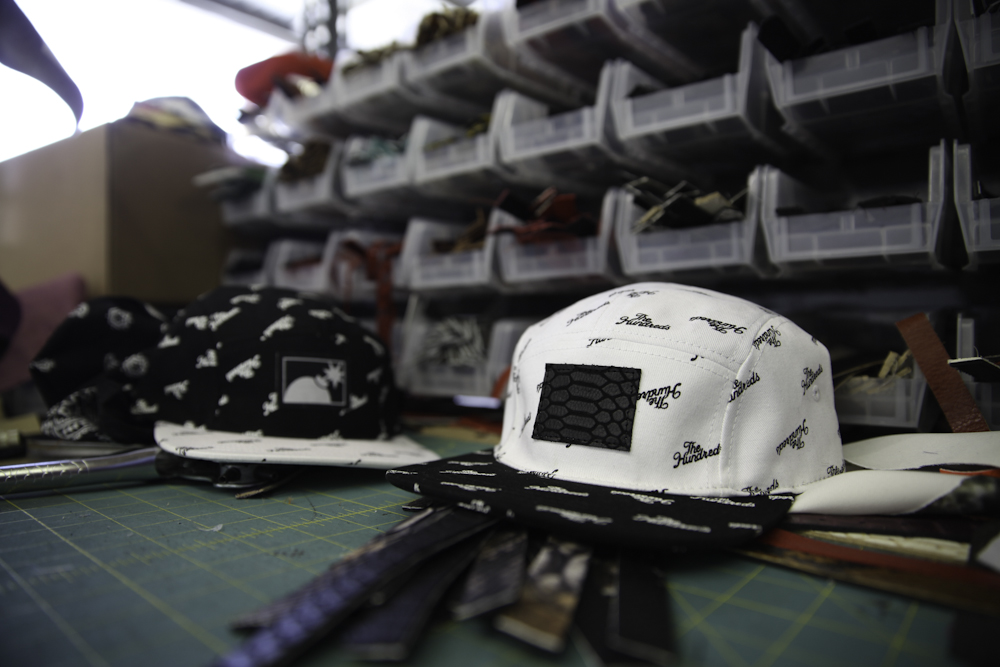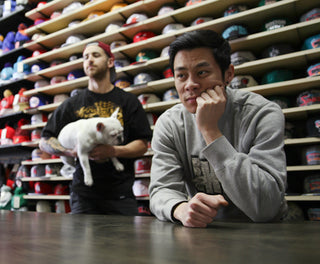I started e-hustling at the age of 15, selling just about anything I could get my hands on via eBay. This continued well into high school. There was no other way to keep up with my friends who somehow all had their dream job at the time… working at the local Footlocker. My folks weren’t having it, they wouldn’t let me work until I was 18, so frequent visits to USPS were the only way to curb my Nike dunk addiction. Eventually I was able to land a job at Finishline, due to some early networking, which eventually paved the way to where I am today. I did the retail thing through college and dreaded it for the most part, especially working the holidays. Somehow I always found myself getting promoted and earning more than my peers, so in hindsight, I guess I was pretty damn good at my job. Eventually I quit my manager position at a skateshop and with hard-work, motivation and some luck was able to carve out a career for myself. Looking back on it now, I realize how essential those 5 years were for my growth as a person and as a professional.
I first heard about the guys from Bespoke last year, but wasn’t able to pay them a visit until last week. Although rocking crazy hats isn’t really my thing, I was fascinated to hear their story, especially with their roots in retail. I’ve had the pleasure of knowing quite a few people that have had amazing success with their own brands and stores, all of which had a strong background in retail. While many put the job down or make it seem like a bottom-of-the-barrel occupation, it really is a great building block for future success, if approached the right way. Taking the 210 freeway all the way down to Rancho Cucamonga, I caught up with Brandon and Tommy from Bespoke Cut-and-Sew for a nice chat about working with the man, instead of for the man.
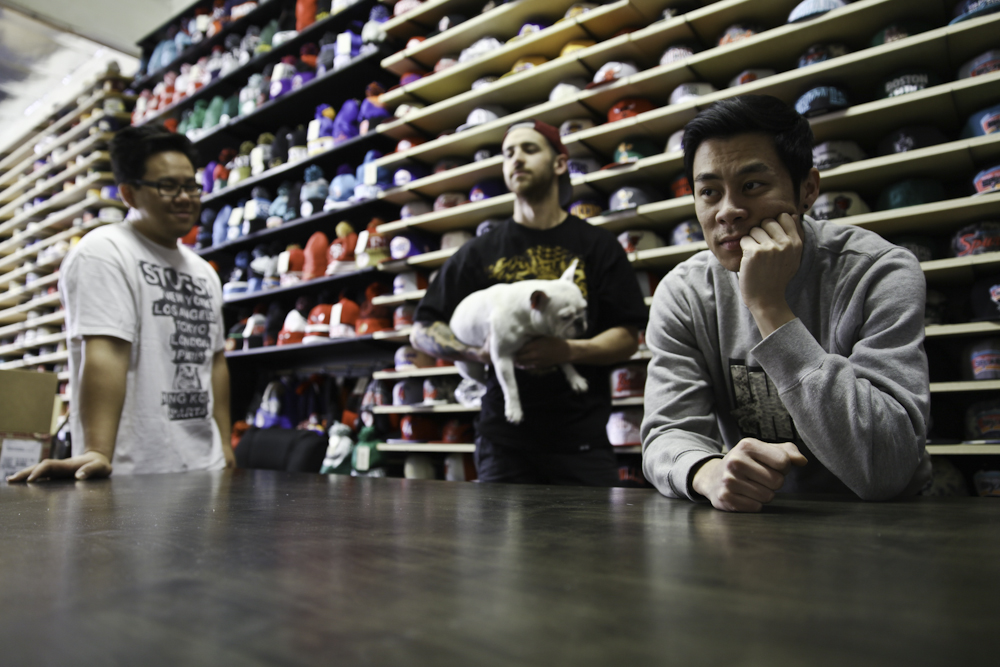
The fellas paying homage to their mall days.
So you guys all worked at Hat Club?
Brandon: There’s four of us, but myself, Tommy, and Josh – we’re the ones that worked at Hat Club. I worked there for about 3 years, he worked there for 4 years. This is actually an order from Hat Club right here (grabs hat). All these hats, all 500 of them.
You guys are working with them officially?
Brandon: Yeah. We have a drop down menu on their website and everything.
What’s the most important thing you both learned from your time there?
Tommy: What helped us the most is learning what people want when it comes to hats. We had the luxury of sitting down and having people come in and talk to us about what they wanted. Hat Club – it’s just a hat company and it’s focused just on hats, so when people come through, and they talk, you really learn what they like. All these designers say, “Oh, I know what people want in a hat.” No, dude. Stand in a hat store and have people walk in and people will tell you exactly what they want. People have a voice, they’ll talk. Like, “Aw, this hat would be nice if it had this.” Just being at Hat Club, you learn how to listen to the customer. Trust me, the customer knows what they want. You could try to do stuff here and there, but with hats? People get religious with hats, man. People get really religious with hats. You know there’s guys out there who keep their hats for like 3-4 years and will not trash it. There’s a reason for that.
You’ve been wearing that one for how long?
Brandon: I have probably almost 200 hats, and this is the only one I wear. It’s disgusting. The bill’s coming off, but it’s one of the original hats we did when we converted it from a fitted to a snapback. It used to be a fitted. This hat’s like 4-years-old. I got it when I worked at Hat Club.
Tommy: It’s one of the originals.

Rows and rows of snapbacks and fitteds.
You used to work for them, now you’re working with them. How did that feel when you first started?
Tommy: It was kind of surreal. I mean, the paycheck is a lot different now than it was before (laughs). We just respect them so much, so to have them believe in what we do and then do so much… it’s a good feeling.
Did you guys approach them?
Tommy: No, we kind of kept it on the down low. We didn’t want them to get upset at us, so we wouldn’t advertise it there. I would say, a couple months after we quit. Three months into the business, we quit Hat Club and then they hit us up and the buyer (Ryan) showed up and said, “Can you guys do 1,500 pieces?” And we were like, “Yeah, we can do that.” We didn’t think he was gonna – ‘cause people always say they can do 1,000 pieces but they never do. But they actually did 1,500.
Brandon: That shipment, too, has revolutionized our production. I would say when we took that 1,500 shipment in, we weren’t ready for that. Hat Club was basically the first person ever to call our bluff and say, “Oh, can you do 1,500 pieces?” We go, “Yeah, we could do that.”
How much time did they give you?
Brandon: Well, they were pretty cool about it, but it took us about a month, worrying every single day.
Tommy: Exactly, you’re talking about 12-14 hour shifts. I mean, they caught our bluff and actually catching that bluff made us think in a different way. We tweaked stuff and as of now, we could punch out a one-of-a-kind piece in less than 10 minutes. But you know, man, it wasn’t a bad thing. I think every company needs that little stress test. And I would say that shipment? Holy shit, dude. That was a stress test.
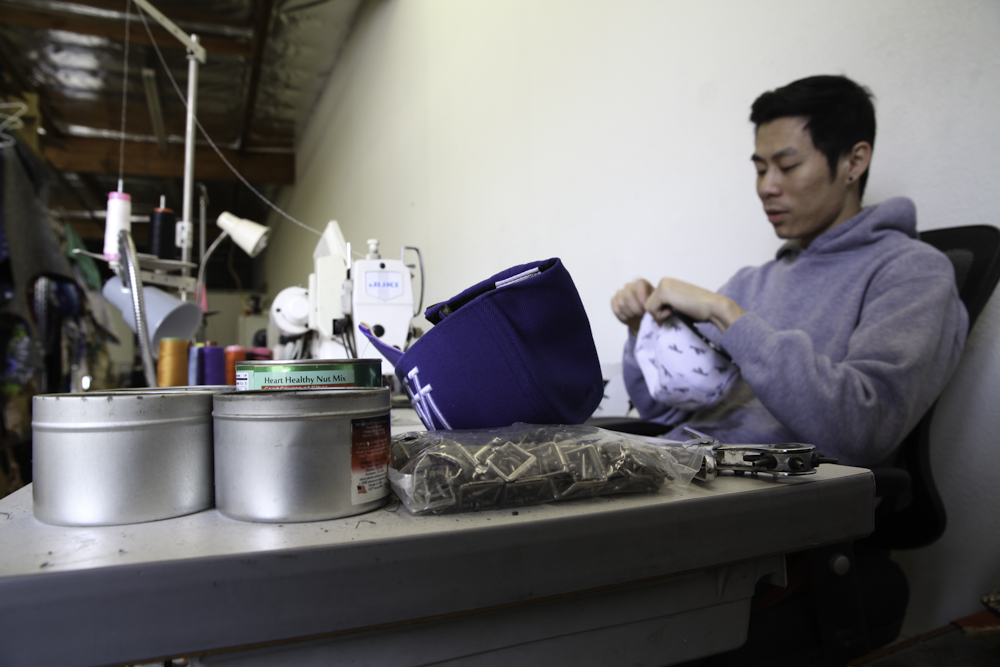
Taking apart and putting together a hat brim
Do you guys work with other hat retailers i.e. Lids?
Tommy: Lids has approached us, but we’ve decided to stay with Hat Club. With Lids, we could do a lot more volume, but we respect Hat Club and we feel like they do it right. They opened the door. They gave us this opportunity. If we didn’t work there, we wouldn’t be here today.
Brandon: We have a lot of respect for them.
What are some of your favorite projects?
Brandon: I like our Art Walk we do in Santa Ana. I don’t know if you know the area at all, but it’s kind of booming and we have a retail location over there. We actually bought a machine dedicated to that store and every first Saturday of the month, we do hats on the spot. The last couple times the store was packed for hours. That’s really fun, then we have the party afterwards at the Yost Theater.
Tommy: Art Walk’s a really cool event, ‘cause you can kind of bring it straight to the customer, like here it is. And if there’s any doubt in your mind that we don’t sell our stuff, here it is, boom.
I worked retail from the time I was 18 all the way ‘til 22. I worked at Finish Line, I worked at Lids… all those places. I never really thought working there would help me out long-term. Like, at all. I just thought of all those jobs as another way to make money. And once I started defining my career and doing all this work, I quickly realized that those people skills developed throughout the years become very important.
Tommy: People call it retail, but I would call it people experience. You’re right there with people and once you talk to them and find ways to word things, you know what I’m saying? We always stress to our employees that the customer is king. That’s where the whole retail thing comes in. People don’t realize there’s a lot of experience you can get just from a simple mall job. I was a quiet kid. I was quiet as hell back then. It wasn’t until I started working retail that I realized how much it can open you up.
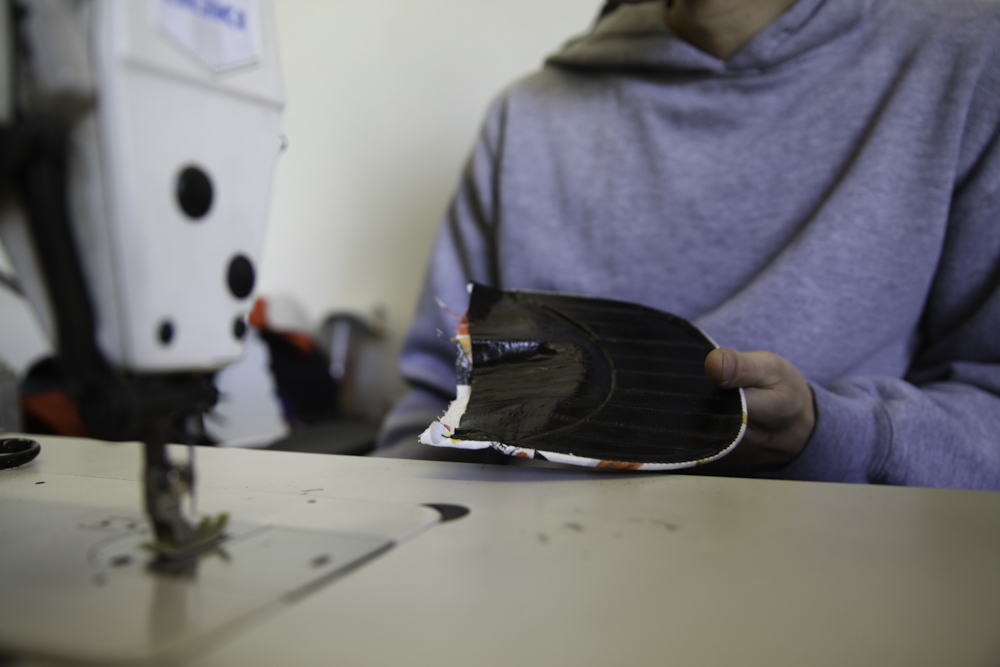
Genuine Unagi skin on a sushi-inspired 5-panel.
One thing I’m curious about… I’ve seen headwear companies using similar materials for their hats yet pricing them significantly lower. How does that affect you guys? Obviously the quality is on two different levels, but someone that doesn’t know would rather pay $30 for a faux exotic skin hat that looks the same but isn’t. How do you guys compete with that?
Brandon: That’s been a question mark since we started. It’s really not an issue for us at all. We have a big enough following through word-of-mouth. People know they can come here and grab (genuine) python hide and put it on their hat for a reasonable price.
Tommy: Well, let’s go back to what you asked me about what you learned about hats and stuff, working at Hat Club. Remember that one thing I mentioned that customers know what they want? For instance, right now, tribal’s hot. A company puts a tribal bill on a hat and they run a unit of 100,000. What’s the significance of that piece? The thing that’s missing out of this equation is the customer’s voice. At Bespoke, we make a hat based on what the customer tells us. It’s not like, “Here’s a hat, you’re gonna like it.” It’s more like, “Here’s a hat, tell us how you like it.” It’s a different approach. People could pay $30 for a hat and all that goodness. I get it. But at the end of the day, your voice is not heard. Shit, maybe you don’t even like tribal print. Maybe you like pink cheetah. Which we have! You know what I’m saying? Maybe you like hot dog print, which we have done. People like stuff like that, but when they say it, their voice isn’t being heard. And you got this company running like 100,000 units, it makes no sense. So there’s really no competition between us and the companies that do that. We’re working on two different planes. It’s two different niches. So if you’re talking about competition, like, people will ask us, “What are you gonna do when the trend dies out?” And our question to them is, “What trend are you talking about?” Because every customer that comes in here that designs a hat, that is their trend. There is no trend. The word “bespoke” in itself, a bespoke suit, that was never a trend. It was more like, “Hey, you know what, I want the suit to fit this way, so can you bespoke it for me?”
Makes sense. People will always wear hats.
Tommy: Exactly. Bespoke isn’t a company that makes crazy hats and designs. We’re not. We just listen to our clientele and make what they want. So when the competition makes all these funky bills, I get it. I know what you’re doing, but at the end of the day, you’re missing one big factor: the customer’s voice. Let’s put it this way, if you fail to hear their voice, your hats will always be in the $30 price range. There’s no way to sell a hat like that in the triple digits. No way.
